TELTONIKA LTE Cat4 Industrial Cellular Router (RUT200)
10 in stock
RUT200 brings the top-rated features of our all-time bestseller RUT240 and is compatible with networks in Asia, CIS, the Middle East, Africa, and South America.
Equipped with 4G LTE, Wi-Fi, and two Ethernet ports, this model is perfect to quickly set up primary and backup connectivity with remote management capabilities.
Due to its compact size, industrial design, and I/Os, this model is very suitable in manufacturing, automation, transportation, and other industrial application scenarios
$117.60
10 in stock
CompareRUT200 brings the top-rated features of our all-time bestseller RUT240 and is compatible with networks in Asia, CIS, the Middle East, Africa, and South America.
Equipped with 4G LTE, Wi-Fi, and two Ethernet ports, this model is perfect to quickly set up primary and backup connectivity with remote management capabilities.
Due to its compact size, industrial design, and I/Os, this model is very suitable in manufacturing, automation, transportation, and other industrial application scenarios
| Brands | Teltonika |
|---|
MOBILE
Mobile module: 4G (LTE) – Cat 4 up to 150 Mbps, 3G – Up to 42 Mbps, 2G – Up to 236.8 kbps
3GPP Release: Release 9
Status: Signal strength (RSSI), SINR, RSRP, RSRQ, EC/IO, RSCP, Bytes sent/received, connected band, IMSI, ICCID
SMS: SMS status, SMS configuration, send/read SMS via HTTP POST/GET, EMAIL to SMS, SMS to EMAIL, SMS to HTTP, SMS to SMS, scheduled SMS, SMS autoreply, SMPP
USSD: Supports sending and reading Unstructured Supplementary Service Data messages
Black/White list: Operator black/white list
Multiple PDN: Possibility to use different PDNs for multiple network access and services
Band management: Band lock, Used band status display
APN: Auto APN
Bridge: Direct connection (bridge) between mobile ISP and device on LAN
Passthrough: Router assigns its mobile WAN IP address to another device on LAN
WIRELESS
Wireless mode: IEEE 802.11b/g/n, Access Point (AP), Station (STA)
WiFi security: WPA2-Enterprise – PEAP, WPA2-PSK, WEP, WPA-EAP, WPA-PSK; AES-CCMP, TKIP, Auto Cipher modes, client separation
SSID/ESSID: SSID stealth mode and access control based on MAC address
WiFi users: Up to 50 simultaneous connections
Wireless Hotspot: Captive portal (Hotspot), internal/external Radius server, built in customizable landing page
ETHERNET
WAN: 1 x WAN port 10/100 Mbps, compliance IEEE 802.3, IEEE 802.3u standards, supports auto MDI/MDIX
LAN: 1 x LAN port, 10/100 Mbps, compliance with IEEE 802.3, IEEE 802.3u standards, supports auto MDI/MDIX
NETWORK
Routing: Static routing, Dynamic routing (BGP, OSPF v2, RIP v1/v2, NHRP)
Network protocols: TCP, UDP, IPv4, IPv6, ICMP, NTP, DNS, HTTP, HTTPS, FTP, SMTP, SSL v3, TLS, ARP, VRRP, PPP, PPPoE, UPNP, SSH, DHCP, Telnet, SMPP, SMNP, MQTT, Wake On Lan (WOL)
VoIP passthrough support: H.323 and SIP-alg protocol NAT helpers, allowing proper routing of VoIP packets
Connection monitoring: Ping Reboot, Wget Reboot, Periodic Reboot, LCP and ICMP for link inspection
Firewall: Port forward, traffic rules, custom rules
DHCP: Static and dynamic IP allocation, DHCP Relay, Relayd
QoS / Smart Queue Management (SQM): Traffic priority queuing by source/destination, service, protocol or port, WMM, 802.11e
DDNS: Supported >25 service providers, others can be configured manually
Network backup: WiFi WAN, Mobile, VRRP, Wired options, each of which can be used as an automatic Failover
Load balancing: Balance Internet traffic over multiple WAN connections
Hotspot: Captive portal (Hotspot), internal/external Radius server, SMS authorization, internal/external landing page, walled garden, user scripts, URL parameters, user groups, individual user or group limitations, user management, 9 default customizable themes
SSHFS: Possibility to mount remote file system via SSH protocol
SECURITY
Authentication: Pre-shared key, digital certificates, X.509 certificates, TACACS+, Radius, IP & Login attempts block
Firewall: Pre-configured firewall rules can be enabled via WebUI, unlimited firewall configuration via CLI; DMZ; NAT; NAT-T
Attack prevention: DDOS prevention (SYN flood protection, SSH attack prevention, HTTP/HTTPS attack prevention), port scan prevention (SYN-FIN, SYN-RST, X-mas, NULL flags, FIN scan attacks)
VLAN: Port and tag based VLAN separation
Mobile quota control: Custom data limits for SIM card
WEB filter: Blacklist for blocking out unwanted websites, Whitelist for specifying allowed sites only
Access control: Flexible access control of TCP, UDP, ICMP packets, MAC address filter
VPN
OpenVPN: Multiple clients and a server can run simultaneously, 27 encryption methods
OpenVPN Encryption: DES-CBC 64, RC2-CBC 128, DES-EDE-CBC 128, DES-EDE3-CBC 192, DESX-CBC 192,
BF-CBC 128, RC2-40-CBC 40, CAST5-CBC 128, RC2-64-CBC 64, AES-128-CBC 128, AES-128-CFB 128, AES-128-CFB1 128, AES-128-CFB8 128, AES-128-OFB 128, AES-128-GCM 128, AES-192-CFB 192, AES-192-CFB1 192, AES-192-CFB8 192, AES-192-OFB 192, AES-192-CBC 192, AES-192-GCM 192, AES-256-GCM 256, AES-256-CFB 256, AES-256-CFB1 256, AES-256-CFB8 256, AES-256-OFB 256, AES-256-CBC 256
IPsec: IKEv1, IKEv2, with 14 encryption methods for IPsec (3DES, DES, AES128, AES192, AES256, AES128GCM8, AES192GCM8, AES256GCM8, AES128GCM12, AES192GCM12, AES256GCM12, AES128GCM16, AES192GCM16, AES256GCM16)
GRE: GRE tunnel, GRE tunnel over IPsec support
PPTP, L2TP: Client/Server instances can run simultaneously, L2TPv3, L2TP over IPsec support
Stunnel: Proxy designed to add TLS encryption functionality to existing clients and servers without any changes in the program’s code
DMVPN: Method of building scalable IPsec VPNs
SSTP: SSTP client instance support
ZeroTier: ZeroTier VPN client support
WireGuard: WireGuard VPN client and server support
Tinc: Tinc offers encryption, authentication and compression in it’s tunnels. Client and server support.
MODBUS TCP SLAVE
ID range: Respond to one ID in range [1;255] or any
Allow Remote Access: Allow access through WAN
Custom registers: MODBUS TCP custom register block requests, which read/write to a file inside the router, and can be used to extend MODBUS TCP Slave functionality
MODBUS TCP MASTER
Supported functions: 01, 02, 03, 04, 05, 06, 15, 16
Supported data formats: 8 bit: INT, UINT; 16 bit: INT, UINT (MSB or LSB first); 32 bit: float, INT, UINT (ABCD (big-endian), DCBA (little-endian), CDAB, BADC)
MODBUS DATA TO SERVER
Protocol: HTTP(S), MQTT, Azure MQTT
MQTT GATEWAY
MQTT Gateway: Allows sending commands and receiving data from MODBUS Master through MQTT broker
DNP3
Supported modes: TCP Master, DNP3 Outstation
MONITORING & MANAGEMENT
WEB UI: HTTP/HTTPS, status, configuration, FW update, CLI, troubleshoot, event log, system log, kernel log
FOTA: Firmware update from server, automatic notification
SSH: SSH (v1, v2)
SMS: SMS status, SMS configuration, send/read SMS via HTTP POST/GET
Call: Reboot, Status, Mobile data on/off, Output on/off, answer/hang-up with a timer, WiFi on/off
TR-069: OpenACS, EasyCwmp, ACSLite, tGem, LibreACS, GenieACS, FreeACS, LibCWMP, Friendly tech, AVSystem
MQTT: MQTT Broker, MQTT publisher
SNMP: SNMP (v1, v2, v3), SNMP Trap
JSON-RPC: Management API over HTTP/HTTPS
MODBUS: MODBUS TCP status/control
RMS: Teltonika Remote Management System (RMS)
IOT PLATFORMS
Cloud of Things: Allows monitoring of: Device data, Mobile data, Network info, Availability
ThingWorx: Allows monitoring of: WAN Type, WAN IP, Mobile Operator Name, Mobile Signal Strength, Mobile Network Type
Cumulocity: Allows monitoring of: Device Model, Revision and Serial Number, WAN Type and IP, Mobile Cell ID, ICCID, IMEI, Connection Type, Operator, Signal Strength
Azure IoT Hub: Can send device IP, Number of bytes send/received, Temperature, PIN count to Azure IoT Hub server, Mobile connection state, Network link state, IMEI, ICCID, Model, Manufacturer, Serial, Revision, IMSI, SIM State, PIN state, GSM signal, WCDMA RSCP, WCDMA EC/IO, LTE RSRP, LTE SINR, LTE RSRQ, CELL ID, Operator, Operator number, Connection type
SYSTEM CHARACTERISTICTS
CPU: Mediatek MIPS 24Kc 580 MHz
RAM: 128 MB, DDR2
FLASH storage: 16 MB, SPI Flash
FIRMWARE / CONFIGURATION
WEB UI: Update FW from file, check FW on server, configuration profiles, configuration backup
FOTA: Update FW
RMS: Update FW/configuration for multiple devices at once
Keep settings: Update FW without losing current configuration
FIRMWARE CUSTOMIZATION
Operating system: RutOS (OpenWrt based Linux OS)
Supported languages: Busybox shell, Lua, C, C++
Development tools: SDK package with build environment provided
INPUT / OUTPUT
Input: 1 x Digital Input, 0 – 6 V detected as logic low, 8 – 30 V detected as logic high
Output: 1 x Digital Output, Open collector output, max output 30 V, 300 mA
Events: Email, RMS, SMS
I/O juggler: Allows to set certain I/O conditions to initiate event
POWER
Connector: 4-pin industrial DC power socket
Input voltage range: 9 – 30 VDC, reverse polarity protection; surge protection >31 VDC 10us max
PoE (passive): Passive PoE over spare pairs. Possibility to power up through LAN port, not compatible with IEEE802.3af, 802.3at and 802.3bt standards, Mode B, LAN1 Port, 9 – 50 VDC
Power consumption: < 6.5 W Max
PHYSICAL INTERFACES
Ethernet: 2 x RJ45 ports, 10/100 Mbps
I/O’s: 1 x Digital Input, 1 x Digital Output on 4-pin power connector
Status LEDs: 3 x Connection type status LEDs, 5 x Connection strength LEDs, 2 x LAN status LEDs, 1 x Power LED
SIM: 1 x SIM slot (Mini SIM – 2FF), 1.8 V/3 V, external SIM holder
Power: 1 x 4-pin power connector
Antennas: 2 x SMA for LTE, 1 x RP-SMA for WiFi antenna connectors
Reset: Reboot/User default reset/Factory reset button
PHYSICAL SPECIFICATION
Casing material: Aluminium housing, plastic panels
Dimensions (W x H x D): 83 x 25 x 74 mm
Weight: 125 g
Mounting options: Bottom and sideways DIN rail mounting slots
OPERATING ENVIRONMENT
Operating temperature: -40 °C to 75 °C
Operating humidity: 10% to 90% non-condensing
Ingress Protection Rating: IP30
REGULATORY & TYPE APPROVALS
Regulatory: CB
SAFETY
Standards: IEC 62368-1:2018 (CB Scheme)

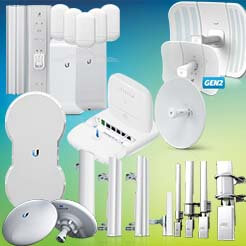
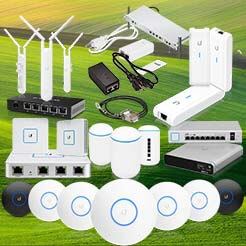
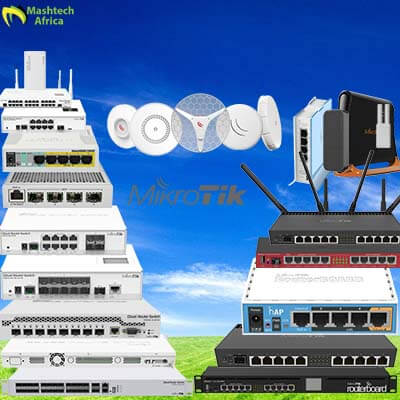


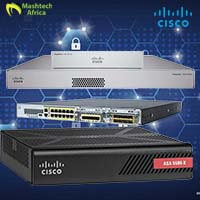

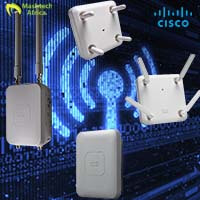
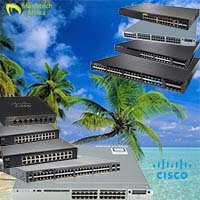
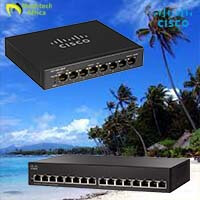

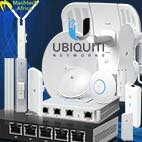
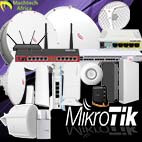
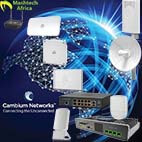


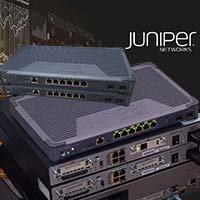







There are no reviews yet.